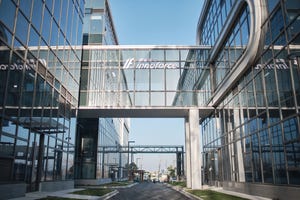August 23, 2021

Automation provides a path to cheaper, faster monoclonal antibody (mAb) production says the UK consortium, which is using 3D printing to develop a tech-independent biomanufacturing control system.
The consortium – which includes BiologIC Technologies, Biopharm Services, the UK Center for Process Innovation (CPI), Pall and SCIEX – announced the pact in July, explaining the plan is to develop a prototype strategy and overlay it onto an existing, small scale mAb line.
BiologIC Technologies’ role is to use its 3D printing technology to develop a smart fluidic system with integrated inline sensing that will enable continuous flow between unit operations according to Richard Vellacott, CEO of BiologIC Technologies.

Image: Stock Photo Secrets
“3D printing allows us to build a high complexity smart fluidic system with integrated inline sensing. This system will enable the control of continuous flow between unit operations in the manufacture of biologics such as monoclonal antibodies, vaccines or other therapies. The system will also provide inline data to all smart control of the manufacturing process.”
3D printing is a better fit for the project than traditional manufacturing methods due to the complexity of the system Vellacott says.
“We are developing a complex fluidic control system that can work with different flow rates and volumes of each unit operation of the continuous bioprocess – it is a key enabler of the continuous system and 3D printing allows us to fabricate complex, fully enclosed fluidic paths into a system that can accommodate this wide fluidic dynamic range and unlock new features that will be disclosed in due course.”
Cost reduction
The control system will be linked to a manufacturing cost modelling platform designed to assess the “manufacturability” of biopharmaceutical products developed by fellow consortium member, Biopharma Services.
Vellacott says, “Once the controls are automated the production process can be optimized to improve the time, quality, cost of the therapy. This provides greater flexibility for a single system to produce multiple therapies.
“We can also begin to decentralized production into locations closer to the point of need and respond more quickly to fluctuations in demand – for example, where mAbs or vaccines are needed rapidly in a local population.”
The consortium expects the control system to reduce costs although the extent of the reduction is yet to be determined Vellacott says.
“We will gather more information to answer this question during the course of the project but the longer-term ambition is to significantly reduce the cost across a broad portfolio of therapies. We also aim to improve product quality, and reduce manufacturing time compared to batch manufacturing. The aim is for better therapies to be available more quickly and at lower cost.”
Availability
The project – which is supported by Innovate UK, a non-departmental public body tasked with fostering industrial development – is part of a wider plan that has also seen the CPI work on a continuous manufacturing system for biologics.
Like the previous project, the plan is to make the automated control system available to the wider biopharmaceutical industry Vellacott says.
“We will be introducing industry 4.0 technologies, including 3D printed smart fluidic control and automated manufacturing control, to prototype greater process control and flexibility over a longer production period.
“The aim is to make the range of technologies available to the wider biopharmaceutical industry and drug companies are very welcome to reach out to the consortium partners to discuss access,” he says.
This aim is also key for CPI spokesman Matthew Herbert, who says “The project aims to disseminate what is possible and showcase how it has been implemented. The system brings together products from a range of different companies and demonstrates how they can be combined to provide an integrated solution.
“If companies wanted to access the technology, they would need to talk to the technology providers and the information and knowledge shared from this project will enable them to make the most effective use of the various technologies and understand how it can be done to achieve their goals and requirements.”
There also plans to use the approach to make manufacturing location more flexible.
Vellacott says “We can also begin to decentralize production into locations closer to the point of need and respond more quickly to fluctuations in demand – for example, where mAbs or vaccines are needed rapidly in a local population.”
About the Author
You May Also Like






